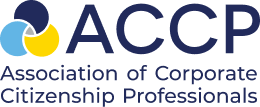Rachel Hutchisson, VP, Global Social Responsibility at Blackbaud
If you’re a social responsibility professional like me, sustainability reporting is on your mind. I literally don’t go a day without seeing something new pop into my inbox about Environment, Social and Governance (ESG). It might be a report issued by another company, a seminar on how to tackle thinking about a key material issue, or a question from a peer asking, “How do I get started?”
That’s the question of the moment, HOW to begin, not IF.
I’ve been working in social responsibility for more than 15 years, and I am excited about the forward momentum we are seeing in the world of reporting, momentum that is including all sizes and kinds of companies, not just the large enterprises. When Blackbaud began its ESG reporting journey in earnest, the resources I could find were mainly for what I call “the big guys.” Sometimes it was overwhelming just wading through all the advice. Where to begin indeed!
Over the past few years, as we have evolved our reporting, I’ve learned a number of things that I hope will help others asking the same question.
Assess where you already are. Equipped with some introductory information on ESG (i.e. what tends to fall in each category), do an assessment of your company today. Take the time to do a little research internally and document your current practices. This will include areas such as giving and volunteerism, diversity of your team, your main sources of energy use, and key governance policies. Taking the time to map out what you already do helps you get a baseline – and understand where you have opportunity.
Get input from your stakeholders. In ESG work, you hear a lot about “materiality.” What this means is that you need to understand what issues are “material” to your business and your key stakeholder are groups. First, establish your groups (for example, we focus on employees, customers, community, and investors). Begin conversations with them or collect information you may already have that tells you what they care about. Next, think about your business and what ESG implications arise (for example, if you manufacture products, you will have different material issues than a services firm). This process of getting feedback will mature over time, as you establish more formal mechanisms to ensure you are listening as you evolve.
Learn from your peers. Invest some time in checking out what other companies are doing. Look at both peers (those similar in size and type) and others that are aspirational. Look at what kind of company they are and what they focus on. You’ll see some similarities across all of them (for example, a focus on human capital and the climate, as those areas are material for everyone). You’ll also pick up on themes unique to each business, what they are prioritizing in their disclosures and storytelling. By all means, keep links to the reports you like for ideas and future reference.
Secure support from leadership. Spend the time to ensure the leadership at your company weighs in and understands what you are doing and why. If you’re fortunate, like I am, the leadership is leading the charge. It might take time and change management to help everyone see why a focus on ESG is essential to your future. Your HR, Marketing, and Investor Relations (if you have such a team) leaders are natural allies in this conversation.
Take it one step at a time. Embracing ESG reporting is a journey than unfolds over time. Focusing on publishing your first report is a great milestone that will help you then identify where to go in the next phase. New ideas and opportunities arise as you open the eyes of others in the company to why this work is vital. Remember that you are investing in the long term. In your early years, you may be getting a handle on what to measure, then shifting to how, then setting goals. For most companies, some areas will be easier to tackle than others, and that’s ok.
I can’t tell you how often I call this work “a journey.” It’s fascinating, and motivating and sometimes hard, but it’s important and should bring you closer to those stakeholders you work with and for every day.

